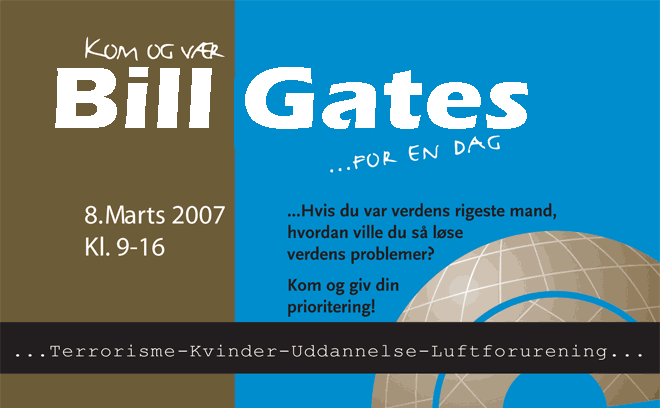Bill Gates for a Day: Biodiversity
Assessment Paper
By Dan Biller
The value of biodiversity is measured through the concept of Total Economic Value (TEV), which is the sum of its use and non-use values. Use values encompass the value of direct use (extractive – e.g. timber and non extractive – e.g. bird watching); the value of indirect use (e.g. environmental services such as flood protection), and the option value of personally enjoying direct and / or indirect use in the future. Non-use values encompass the notions of altruism, bequest and existence; that is, others including future generations enjoying biodiversity and the fact that the existence of biodiversity has a value even when people don’t derive or intend to derive direct or indirect uses of it (e.g. knowing that the Siberian Tiger roams the wild while realizing that one will never see one or use Siberian Tiger products). Since estimating the world’s biodiversity TEV is very difficult, uncertain, and controversial , research usually focuses on estimating the benefits of conserving or using biodiversity in a sustainable way in a particular ecosystem or through specific species. In addition, a large share of biodiversity’s TEV comes from non-use values. These can be global in nature and are closely linked to biodiversity’s public good attributes, making the valuation exercise especially challenging. On the other hand, since the costs of biodiversity conservation and sustainable use of its components are primarily locally borne, cost estimations have been largely absent from the literature.
While the term biodiversity is broad encompassing, as indicated in OECD (2001 and 2002), finding out the precise object to be valued is a key challenge in valuation exercises in general and when specifically valuing biodiversity or a part of it. As discussed, there is a clear distinction between biological resources and biological diversity, but many valuation studies do not make this distinction. They tend to value biological resources rather than biological diversity, which could lead to suboptimal programs to support biodiversity. Projects targeting single species, such as the spotted owl or the tiger, may in biological diversity terms be sub optimal, if these species have a close genetic relative that is not endangered. Moreover, to be relevant for policy making economic valuation of biodiversity should measure marginal or discrete local changes in the availability of biodiversity. For example, land use changes, increased tourism, and increased pollution affect the future flow of services from an ecosystem. It is important to value the impact on this flow when deciding whether to engage in a specific development policy or not.

